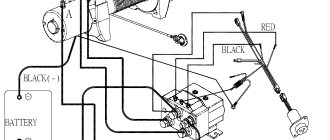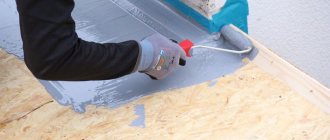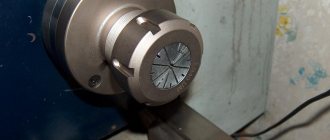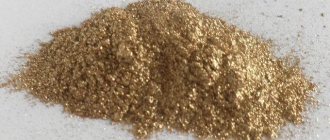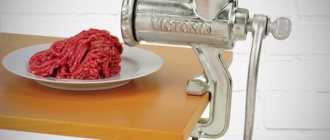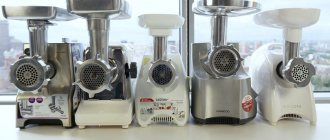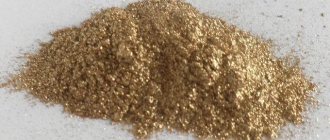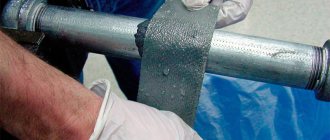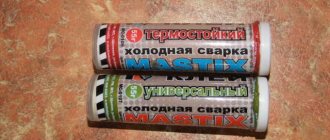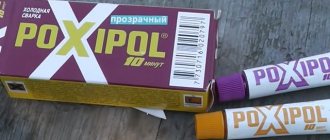One of the ancient products that people learned to extract from this drink was butter. In Rus' it was prepared only with the help of hands, but over time they began to use special devices.
There is a wide selection of devices for those who like to cook on their own. In the article you will learn about the history of making butter and understand the use and instructions for the butter churn.
Nuances of butter churning
Such a high-calorie product as butter is distributed throughout the world due to its taste and aromatic smell. But not everyone knows how to cook it.
The main process on which the result depends is beating.
A butter churn, or “pakhtalka” (as it was called before), is used to prepare butter from cream or sour cream, and sometimes from slightly sour milk. The main process in this device is mechanical whipping, during which buttermilk (milk fat) is separated from the main raw material. Ultimately, the mass becomes dense, homogeneous consistency.
After work
After finishing the work, the butter is removed, rinsed with clean water and transferred to a separate container or a special form, if intended for sale. The unit needs to be washed. To remove food residues, it is advisable to use a warm soda solution. It is strictly not recommended to use abrasive cleaning agents to avoid damaging the surfaces of components and parts of the device. Order butter churns in the online store RusskayaFerma.ru right now! Don't miss the opportunity to buy a quality product at a reasonable price. Provide your family with natural oil or make a profit - both options are worth choosing the appropriate model and clicking the “add to cart” button.
History of churning
Oil making is a process that has a history of several thousand years. Not only the butter was valued, but also the buttermilk that was obtained during cooking. Let us highlight several sections in the history of butter churning:
- First mentions. Butter appeared on the dinner table about 3 thousand years ago. King Solomon himself described it in his writings. The first images of the manufacturing process were painted on Sumerian stones at the El Obeid temple: people are shown milking cows, skimming the milk and churning it.
Another of the ancient relics is kept in the Louvre in Paris. This is a stele from the code of laws of King Hammurabi, on which the first written mention of oil is carved.
- Indian mythology. In this culture, the formation of the entire world is associated with the process of churning. The myths describe how the Indian Devas (gods) and Asuras (demons) started a war for the possession of “amrita” - the heavenly nectar of immortality. In the legend “The Churning of the Milk Ocean,” they wrapped a snake around Mount Mandara and swirled the water around it. The liquid in the ocean first became milk and then oil. The result was a jar of heavenly nectar, apparently it was buttermilk. The Devas got the desired drink and defeated the Asuras. In honor of this, every 12 years in India they organize the Kumbh Mela, which translates as “festival of the jug.”
- American traditions. In North America, a tradition of oil sculptures began in the 19th century that continues to this day. Figures made from unusual materials are presented at fairs and festivals in the United States. The creation of the first creation is attributed to Caroline Brooks and dates back to 1876, when the Centennial Fair took place in Philadelphia. In Canada, heavy promotion of butter statues began in the post-war years to eclipse the popularity of margarine. Don't think that the figures are made entirely of edible product - there is a wooden frame inside them.
- The craft of butter making in Russia . In our area, this craft is mentioned in the “Russian Truth” back in the 11th century. Subsequently, oil trade abroad assumed large proportions, which is why Peter I imposed taxes on this activity. The production process was as follows: sour cream was fermented, then it was collected in a pot or other container and churned by hand or with a whorl.
A huge contribution to the development of this craft was made by retired lieutenant Nikolai Vasilyevich Vereshchagin. Before his intervention, butter churning developed slowly - there was no convenient technique. We had to let the milk sit for a long time to get cream.
Vereshchagin found funding for a demonstration dairy. It demonstrated the process of cream separation, which increased the quality and reduced the cost of the product.
Nikolai Vasilyevich also invented the technology for producing butter from boiled cream. Thanks to heat treatment, the product acquired a delicate, refined taste. This oil was called “Parisian”.
Operation of a butter churn: nuances, raw materials, instructions
One of the ancient products that people learned to extract from this drink was butter. In Rus' it was prepared only with the help of hands, but over time they began to use special devices.
Butter is a long-loved product among the Slavic peoples. And if previously it was prepared in every home, today it is sold in every store. A truly unique creamy taste is obtained only through our own production process.
There is a wide selection of devices for those who like to cook on their own. In the article you will learn about the history of making butter and understand the use and instructions for the butter churn.
Nuances of butter churning
Such a high-calorie product as butter is distributed throughout the world due to its taste and aromatic smell. But not everyone knows how to cook it.
The main process on which the result depends is beating.
A butter churn, or “pakhtalka” (as it was called before), is used to prepare butter from cream or sour cream, and sometimes from slightly sour milk. The main process in this device is mechanical whipping, during which buttermilk (milk fat) is separated from the main raw material. Ultimately, the mass becomes dense, homogeneous consistency.
History of churning
Oil making is a process that has a history of several thousand years. Not only the butter was valued, but also the buttermilk that was obtained during cooking. Let us highlight several sections in the history of butter churning:
First mentions. Butter appeared on the dinner table about 3 thousand years ago. King Solomon himself described it in his writings. The first images of the manufacturing process were painted on Sumerian stones at the El Obeid temple: people are shown milking cows, skimming the milk and churning it. Another of the ancient relics is kept in the Louvre in Paris. This is a stele from the code of laws of King Hammurabi, on which the first written mention of oil is carved.
Indian mythology. In this culture, the formation of the entire world is associated with the process of churning. The myths describe how the Indian Devas (gods) and Asuras (demons) started a war for the possession of “amrita” - the heavenly nectar of immortality. In the legend “The Churning of the Milk Ocean,” they wrapped a snake around Mount Mandara and swirled the water around it. The liquid in the ocean first became milk and then oil. The result was a jar of heavenly nectar, apparently it was buttermilk. The Devas got the desired drink and defeated the Asuras. In honor of this, every 12 years in India they organize the Kumbh Mela, which translates as “festival of the jug.” American traditions. In North America, a tradition of oil sculptures began in the 19th century that continues to this day. Figures made from unusual materials are presented at fairs and festivals in the United States. The creation of the first creation is attributed to Caroline Brooks and dates back to 1876, when the Centennial Fair took place in Philadelphia. In Canada, heavy promotion of butter statues began in the post-war years to eclipse the popularity of margarine. Don't think that the figures are made entirely of edible product - there is a wooden frame inside them.
The craft of butter making in Russia. In our area, this craft is mentioned in the “Russian Truth” back in the 11th century. Subsequently, oil trade abroad assumed large proportions, which is why Peter I imposed taxes on this activity. The production process was as follows: sour cream was fermented, then it was collected in a pot or other container and churned by hand or with a whorl.
A huge contribution to the development of this craft was made by retired lieutenant Nikolai Vasilyevich Vereshchagin. Before his intervention, butter churning developed slowly - there was no convenient technique. We had to let the milk sit for a long time to get cream.
Vereshchagin found funding for a demonstration dairy. It demonstrated the process of cream separation, which increased the quality and reduced the cost of the product.
Nikolai Vasilyevich also invented the technology for producing butter from boiled cream. Thanks to heat treatment, the product acquired a delicate, refined taste. This oil was called “Parisian”.
Feedstock
The most important aspect in oiling is the quality of the initial product. The most commonly used is cow's milk cream. But if for some reason this type of main raw material is not suitable, feel free to choose goat or sheep milk. It is better to use farm or homemade products, as store-bought products have been carefully processed during the manufacturing process and therefore will not produce the desired result.
Butter is made from cream of two types of fat content:
- average (35-38%);
- high (82.5-83%).
Important! Be careful about the amount of fat: if there is a lot of it, the butter beater will work slower.
Pay attention to how ripe the cream is. If the raw materials are not ripe, you will get less buttermilk and fat, and the butter itself will be soft. If the cream, on the contrary, is overripe, then foam will appear during processing and there will be less liquid fat. Then the cooking process will slow down, and the product will turn out to be rough in consistency. The ideal ratio is: when the solid mass is approximately 30-35%, and the rest is liquid.
To prepare the cream for whipping, carry out the pasteurization process. The main purpose of this action is to destroy enzymes that accelerate oil spoilage. The raw materials must be subjected to heat treatment, where the temperature is above 85ºC. Most often, this procedure is carried out in special plate-shaped pasteurizers, where it is possible to evenly distribute and heat the cream.
Under such conditions, the efficiency of the process reaches 98-99%. Select the temperature level during pasteurization taking into account the fat content and quality of oil you need to obtain. When heat treated, the product develops a special taste, somewhat reminiscent of nuts.
Interesting
You will feel this smell well in Vologda oil, since the raw materials for it are specially pasteurized in a closed system at 93ºC and above. In other types of product such a specific taste will be practically not felt.
Instructions for obtaining a creamy product How to churn butter in a butter churn
After the cream has been pasteurized, the process of converting it into butter begins.
The step-by-step recipe looks like this:
- Bring the raw materials to the required temperature. It ranges from 0ºС to 6 ºС. When cooled, part of the fat mass (approximately 33%) will become solid. The process itself must be fast, since during it crystallization of fat occurs. Let the cream mature. This stage takes from 5 to 20 hours. The shell of the fat globules will cool and become thinner, and the raw material will be ready for the next processing step.
- Beat the resulting mass. At this stage, you need to correctly understand how to churn butter in a butter churn. To do this, fill the device with raw materials, but no more than 65% of the total volume, and turn on the device. The initial temperature of the cream is from 12 to 14ºС. Time: 45 minutes.
- Remove buttermilk. Separate the dense butter grain from the liquid.
- Rinse the resulting oil. This point should be followed if the cream was initially of low quality. Add water to the device that meets drinking standards and rinse at least twice, constantly lowering the temperature of the raw material by 2ºC.
- Achieve a uniform consistency with a moisture percentage that should not exceed 14%. Focus on the type of oil - it should not appear wet.
By following this plan, you will get a quality product without putting in a lot of effort.
Homemade units
In the absence of the necessary equipment, oil is made at home. There are several ways to create a whipping machine with your own hands. These include the following:
We insert the whisk into a screwdriver or other suitable tool with a rotating element, connect it to electricity and start cooking. To implement the second option, you will need the following parts: a small motor, nuts, screws, metal blades with a total length of 4 to 5 cm on a rod, a lid and a 3-liter jar. Screw the jar lid to the motor using screws and nuts. First make a hole in the cover to connect the blade rod to the motor. Next, place the raw materials in a jar and close the top with a lid with a built-in design. Start cooking.
The disadvantages of such homemade structures are obvious:
- instability in use;
- difficulty finding specific parts;
- low level of safety in use.
With great desire and painstaking work, it is still possible to create a functional apparatus for churning butter. But the low efficiency of such a device does not guarantee high quality of the product.
Modern equipment How to choose a butter churn
There is a wide selection of devices on the market. They have low processing volume, compact shape and easy use. So, how to choose a butter churn? The model range and choice of manufacturers is quite wide. Most popular devices:
- Stary Oskol ME 12/200;
- Manual separator-churn Penzmash RZ-OPS-M;
- Farmer MB-01;
- Household electric "Motor Sich MBE-6".
These products are similar in their technical characteristics; pay special attention to the main advantages of the model, thanks to which it differs from the rest. Based on the factors that are right for your family.
If your household appliances break down, you can always give them to specialists at https://ekb.service-eco.ru for repair.
Reviews from oil producers
A large number of people have already mastered the churning process and tell how to use a butter churn from their own experience.
“While living in the village, I had to constantly “reinvent the wheel” and get by without special technological devices. With modern technology you can make your life much easier. For example, a butter churn is a wonderful device. The instructions for use are simple, everyone can figure it out. The productivity is also quite good - the amount of oil obtained is no less than 35% of the initial volume of raw materials. Personally, I don’t pour out the buttermilk, but use it to bake pancakes or add it to other dough.” Konstantin, 63 years old.
“In my device, in addition to the oil churn, there is also a separator. This is very convenient; from three liters of milk you get about a liter of cream. I also whip the butter often. The only thing was that I had to tinker with assembling the device; video instructions from the Internet came to the rescue.” Marina, 31 years old.
“The oil extraction process is even faster than I expected. And the main thing is that you can’t buy a product of this quality in a store. In general, the whole family is happy.” Alexander, 40 years old.
Butter churn operation
There is nothing complicated in the operation of a butter churn; you just need to get to know the process better, find good raw materials and choose the right equipment. The reward for this work will be high-quality homemade oil, which is given even to children without fear.
Feedstock
The most important aspect in oiling is the quality of the initial product. The most commonly used is cow's milk cream. But if for some reason this type of main raw material is not suitable, feel free to choose goat or sheep milk. It is better to use farm or homemade products, as store-bought products have been carefully processed during the manufacturing process and therefore will not produce the desired result.
Butter is made from cream of two types of fat content:
- average (35-38%);
- high (82.5-83%).
Important
Be careful about the amount of fat: if there is a lot of it, the butter beater will work slower.
Pay attention to how ripe the cream is. If the raw materials are not ripe, you will get less buttermilk and fat, and the butter itself will be soft. If the cream, on the contrary, is overripe, then foam will appear during processing and there will be less liquid fat. Then the cooking process will slow down, and the product will turn out to be rough in consistency. The ideal ratio is: when the solid mass is approximately 30-35%, and the rest is liquid.
To prepare the cream for whipping, carry out the pasteurization process. The main purpose of this action is to destroy enzymes that accelerate oil spoilage. The raw materials must be subjected to heat treatment, where the temperature is above 85ºC. Most often, this procedure is carried out in special plate-shaped pasteurizers, where it is possible to evenly distribute and heat the cream.
Under such conditions, the efficiency of the process reaches 98-99%. Select the temperature level during pasteurization taking into account the fat content and quality of oil you need to obtain. When heat treated, the product develops a special taste, somewhat reminiscent of nuts.
Interesting
You will feel this smell well in Vologda oil, since the raw materials for it are specially pasteurized in a closed system at 93ºC and above. In other types of product such a specific taste will be practically not felt.
Operating principle
Once the wooden oil press (or metal) is assembled and equipped with replaceable attachments, you can begin to use it for its intended purpose. To extract oil using such a unit (for example, from sunflower seeds), you must perform the following steps:
- Raw materials are poured into the loading ladle of the device.
- The rollers, the surface of which is covered with a grater cloth, are driven into rotation by means of a handle.
- Due to the rotation of the rolls, the raw material is drawn into the gap between them, where the peeling occurs.
- After peeling, the sunflower kernels and the husk from which they are freed end up in the lower bucket.
- The mixture consisting of sunflower kernels and husks is winnowed.
- Rollers with a grater cloth are replaced with rollers with a smooth surface, with the help of which vegetable oil will be squeezed out.
- The cleaned seed kernels are placed in the upper bucket and sent to rolling.
- To reduce the size of the gap between the rollers, which is necessary so that the seed kernels passing between them are compressed with the required force, a special lever of the hand press, which is moved to the second position, allows.
- The result of rolling is a mushy mass, which must be pressed to extract the vegetable oil from it.
Manual type wooden hydraulic oil press for squeezing oil from seeds and nuts
Since a manual squeezing press is not able to provide the high pressure exerted on the raw materials used, the percentage of oil yield is lower than when using specialized equipment. If you use an electric motor or a hydraulic press to drive such equipment, you can correct this shortcoming.
A manual oil press has a number of advantages. We present the most significant of them.
- Due to the simplicity of the design, such a press can be made by hand.
- The finished product has excellent taste and high nutritional value.
Manual screw press for home oil extraction
At home or in a small production workshop, you can use both a wooden and a screw press to produce vegetable oil, which are highly efficient. It should be kept in mind: if you do not make such devices for extracting oil yourself, but purchase ready-made models, then a wooden press based on a hydraulic mechanism will cost much more than a screw press. If you take such a unit to organize a small business producing and selling environmentally friendly vegetable oil, it will pay for itself quickly enough. Such equipment will pay for itself even faster if you use it to produce not only sunflower, but also olive or even cedar oil.
Instructions for obtaining a creamy product
After the cream has been pasteurized, the process of converting it into butter begins.
The step-by-step recipe looks like this:
- Bring the raw materials to the required temperature. It ranges from 0ºС to 6 ºС. When cooled, part of the fat mass (approximately 33%) will become solid. The process itself must be fast, since during it crystallization of fat occurs.
- Let the cream mature. This stage takes from 5 to 20 hours. The shell of the fat globules will cool and become thinner, and the raw material will be ready for the next processing step.
- Beat the resulting mass. At this stage, you need to correctly understand how to churn butter in a butter churn. To do this, fill the device with raw materials, but no more than 65% of the total volume, and turn on the device. The initial temperature of the cream is from 12 to 14ºС. Time: 45 minutes.
- Remove buttermilk. Separate the dense butter grain from the liquid.
- Rinse the resulting oil. This point should be followed if the cream was initially of low quality. Add water to the device that meets drinking standards and rinse at least twice, constantly lowering the temperature of the raw material by 2ºC.
- Achieve a uniform consistency with a moisture percentage that should not exceed 14%. Focus on the type of oil - it should not appear wet.
By following this plan, you will get a quality product without putting in a lot of effort.
Homemade units
In the absence of the necessary equipment, oil is made at home. There are several ways to create a whipping machine with your own hands. These include the following:
- We insert the whisk into a screwdriver or other suitable tool with a rotating element, connect it to electricity and start cooking.
- To implement the second option, you will need the following parts: a small motor, nuts, screws, metal blades with a total length of 4 to 5 cm on a rod, a lid and a 3-liter jar. Screw the jar lid to the motor using screws and nuts. First make a hole in the cover to connect the blade rod to the motor. Next, place the raw materials in a jar and close the top with a lid with a built-in design. Start cooking.
The disadvantages of such homemade structures are obvious:
- instability in use;
- difficulty finding specific parts;
- low level of safety in use.
With great desire and painstaking work, it is still possible to create a functional apparatus for churning butter. But the low efficiency of such a device does not guarantee high quality of the product.
DIY butter churn
As a child in the village, I was a “deputy” shepherd - an under-shepherd. It was wartime and for lunch my mother gave me a slice of rye bread and a bottle (quarter) of fresh milk.
You used to tie this bottle to your belt and run after the cows, and by lunchtime there would be a piece of butter floating on top of it.
You drink the buttermilk, and you knock the butter out of the bottle onto your bread, spread it - and such grace! When churning butter in large quantities, our family used a hand-made butter churn . Now, when I was in the village, I noticed that the villagers did not churn butter.
And if someone knocks it down, it’s in primitive ways: with a spoon or a stirrer in a saucepan, and some just in a bottle, stirring the sour cream in it tediously and for a long time.
And I decided to talk about a homemade wooden milk churn from my childhood. The device was simple and now forgotten in the village.
A homemade homemade butter churn consists of a tank, inside of which a stirrer with blades is placed. The handle is located outside the stirrer. When a person turns this handle, a wooden homemade butter churn stirs the sour cream and churns the butter. The tank holds about five liters of sour cream. The oil yield is about one kilogram.
The tank of a wooden homemade butter churn is hexagonal. To make its end walls, a 15 mm thick board is used. Its three sides are made from the same boards. And the other two are made of 4 mm thick plywood. The upper part of the tank is opening.
Guides bent from tin are nailed along its edges. A retractable plywood cover is inserted into them. Two legs are nailed or screwed to the tank. A 0.6 mm rod is used for the stirrer shaft. An M6 thread is cut at one end.
A wooden handle is put on the second - bent - end, a washer is used and the end is riveted.
Holes for the shaft are drilled in the crossbars of the mixer. A nut with an M6 thread is attached to the right cross member. The nut is nailed to the crossbar with small nails. The shaft is easily screwed into the nut and securely fastened to the mixer. It's easy to unscrew it.
To ensure that the stirrer of a homemade butter always occupies the desired position and does not move, a wooden bushing is placed on the shaft. The shaft is inserted into the tank through a rubber seal. The hole for the handle in the opposite end of the tank is closed with a plug made of tin (the plug is also nailed with small nails).
After you make the tank, check it for leaks. If the water poured into it flows out, cover the discovered cracks with window putty. Paint the outside of the tank of the butter churn you made yourself with light-colored oil paint.
article from https://stroitelstvo-remont.net/
master’s website / photo gallery “House carving from Alex” / video on / contacts
Design, production, installation of carpentry and carved products from solid wood for the exterior decoration of a house: house carvings, wooden carved platbands, cornices, shutters, windows, porches, doors, stairs, arches, gazebos, garden furniture, and other solid wood products, as well as restoration of facades, architectural structures decorated with wooden carved patterns and elements...
Page 3
master’s website / photo gallery “House carving from Alex” / video on / contacts
Design, production, installation of carpentry and carved products from solid wood for the exterior decoration of a house: house carvings, wooden carved platbands, cornices, shutters, windows, porches, doors, stairs, arches, gazebos, garden furniture, and other solid wood products, as well as restoration of facades, architectural structures decorated with wooden carved patterns and elements...
Page 4
master’s website / photo gallery “House carving from Alex” / video on / contacts
Design, production, installation of carpentry and carved products from solid wood for the exterior decoration of a house: house carvings, wooden carved platbands, cornices, shutters, windows, porches, doors, stairs, arches, gazebos, garden furniture, and other solid wood products, as well as restoration of facades, architectural structures decorated with wooden carved patterns and elements...
Page 5
master’s website / photo gallery “House carving from Alex” / video on / contacts
Design, production, installation of carpentry and carved products from solid wood for the exterior decoration of a house: house carvings, wooden carved platbands, cornices, shutters, windows, porches, doors, stairs, arches, gazebos, garden furniture, and other solid wood products, as well as restoration of facades, architectural structures decorated with wooden carved patterns and elements...
Page 6
master’s website / photo gallery “House carving from Alex” / video on / contacts
Design, production, installation of carpentry and carved products from solid wood for the exterior decoration of a house: house carvings, wooden carved platbands, cornices, shutters, windows, porches, doors, stairs, arches, gazebos, garden furniture, and other solid wood products, as well as restoration of facades, architectural structures decorated with wooden carved patterns and elements...
Page 7
master’s website / photo gallery “House carving from Alex” / video on / contacts
Design, production, installation of carpentry and carved products from solid wood for the exterior decoration of a house: house carvings, wooden carved platbands, cornices, shutters, windows, porches, doors, stairs, arches, gazebos, garden furniture, and other solid wood products, as well as restoration of facades, architectural structures decorated with wooden carved patterns and elements...
Page 8
master’s website / photo gallery “House carving from Alex” / video on / contacts
Design, production, installation of carpentry and carved products from solid wood for the exterior decoration of a house: house carvings, wooden carved platbands, cornices, shutters, windows, porches, doors, stairs, arches, gazebos, garden furniture, and other solid wood products, as well as restoration of facades, architectural structures decorated with wooden carved patterns and elements...
Page 9
master’s website / photo gallery “House carving from Alex” / video on / contacts
Design, production, installation of carpentry and carved products from solid wood for the exterior decoration of a house: house carvings, wooden carved platbands, cornices, shutters, windows, porches, doors, stairs, arches, gazebos, garden furniture, and other solid wood products, as well as restoration of facades, architectural structures decorated with wooden carved patterns and elements...
Page 10
master’s website / photo gallery “House carving from Alex” / video on / contacts
Design, production, installation of carpentry and carved products from solid wood for the exterior decoration of a house: house carvings, wooden carved platbands, cornices, shutters, windows, porches, doors, stairs, arches, gazebos, garden furniture, and other solid wood products, as well as restoration of facades, architectural structures decorated with wooden carved patterns and elements...
Page 11
master’s website / photo gallery “House carving from Alex” / video on / contacts
Design, production, installation of carpentry and carved products from solid wood for the exterior decoration of a house: house carvings, wooden carved platbands, cornices, shutters, windows, porches, doors, stairs, arches, gazebos, garden furniture, and other solid wood products, as well as restoration of facades, architectural structures decorated with wooden carved patterns and elements...
Page 12
master’s website / photo gallery “House carving from Alex” / video on / contacts
Design, production, installation of carpentry and carved products from solid wood for the exterior decoration of a house: house carvings, wooden carved platbands, cornices, shutters, windows, porches, doors, stairs, arches, gazebos, garden furniture, and other solid wood products, as well as restoration of facades, architectural structures decorated with wooden carved patterns and elements...
Page 13
master’s website / photo gallery “House carving from Alex” / video on / contacts
Design, production, installation of carpentry and carved products from solid wood for the exterior decoration of a house: house carvings, wooden carved platbands, cornices, shutters, windows, porches, doors, stairs, arches, gazebos, garden furniture, and other solid wood products, as well as restoration of facades, architectural structures decorated with wooden carved patterns and elements...
Page 14
master’s website / photo gallery “House carving from Alex” / video on / contacts
Design, production, installation of carpentry and carved products from solid wood for the exterior decoration of a house: house carvings, wooden carved platbands, cornices, shutters, windows, porches, doors, stairs, arches, gazebos, garden furniture, and other solid wood products, as well as restoration of facades, architectural structures decorated with wooden carved patterns and elements...
Page 15
master’s website / photo gallery “House carving from Alex” / video on / contacts
Design, production, installation of carpentry and carved products from solid wood for the exterior decoration of a house: house carvings, wooden carved platbands, cornices, shutters, windows, porches, doors, stairs, arches, gazebos, garden furniture, and other solid wood products, as well as restoration of facades, architectural structures decorated with wooden carved patterns and elements...
0
master’s website / photo gallery “House carving from Alex” / video on / contacts
Design, production, installation of carpentry and carved products from solid wood for the exterior decoration of a house: house carvings, wooden carved platbands, cornices, shutters, windows, porches, doors, stairs, arches, gazebos, garden furniture, and other solid wood products, as well as restoration of facades, architectural structures decorated with wooden carved patterns and elements...
1
master’s website / photo gallery “House carving from Alex” / video on / contacts
Design, production, installation of carpentry and carved products from solid wood for the exterior decoration of a house: house carvings, wooden carved platbands, cornices, shutters, windows, porches, doors, stairs, arches, gazebos, garden furniture, and other solid wood products, as well as restoration of facades, architectural structures decorated with wooden carved patterns and elements...
2
master’s website / photo gallery “House carving from Alex” / video on / contacts
Design, production, installation of carpentry and carved products from solid wood for the exterior decoration of a house: house carvings, wooden carved platbands, cornices, shutters, windows, porches, doors, stairs, arches, gazebos, garden furniture, and other solid wood products, as well as restoration of facades, architectural structures decorated with wooden carved patterns and elements...
3
master’s website / photo gallery “House carving from Alex” / video on / contacts
Design, production, installation of carpentry and carved products from solid wood for the exterior decoration of a house: house carvings, wooden carved platbands, cornices, shutters, windows, porches, doors, stairs, arches, gazebos, garden furniture, and other solid wood products, as well as restoration of facades, architectural structures decorated with wooden carved patterns and elements...
4
master’s website / photo gallery “House carving from Alex” / video on / contacts
Design, production, installation of carpentry and carved products from solid wood for the exterior decoration of a house: house carvings, wooden carved platbands, cornices, shutters, windows, porches, doors, stairs, arches, gazebos, garden furniture, and other solid wood products, as well as restoration of facades, architectural structures decorated with wooden carved patterns and elements...
5
master’s website / photo gallery “House carving from Alex” / video on / contacts
Design, production, installation of carpentry and carved products from solid wood for the exterior decoration of a house: house carvings, wooden carved platbands, cornices, shutters, windows, porches, doors, stairs, arches, gazebos, garden furniture, and other solid wood products, as well as restoration of facades, architectural structures decorated with wooden carved patterns and elements...
6
master’s website / photo gallery “House carving from Alex” / video on / contacts
Design, production, installation of carpentry and carved products from solid wood for the exterior decoration of a house: house carvings, wooden carved platbands, cornices, shutters, windows, porches, doors, stairs, arches, gazebos, garden furniture, and other solid wood products, as well as restoration of facades, architectural structures decorated with wooden carved patterns and elements...
Modern equipment
There is a wide selection of devices on the market. They have low processing volume, compact shape and easy use. So, how to choose a butter churn? The model range and choice of manufacturers is quite wide. Let's compare the most popular devices:
- Stary Oskol ME 12/200;
- Manual separator-churn Penzmash RZ-OPS-M;
- Farmer MB-01;
- Household electric "Motor Sich MBE-6".
| Device no. | 1 | 2 | 3 | 4 |
| Characteristic | ||||
| "Penzmash" | "Uralspetsmash" | "Motor Sich" | ||
| Rated power, (W) | 250 | 250 | 250 | 350 |
| Total volume, (l) | 11 | 6,5 | 11 | 10 |
| Raw material loading volume, (l) | from 3.5 to 6 | from 2 to 3 | 6 | from 2 to 6 |
| Moving part material | Stainless steel | Stainless steel | Stainless steel | Stainless steel |
| Container material | Food grade plastic | Metal-plastic | Food plastic | Polycarbonate |
| Number of revolutions/min | 1380 | 1380 | 1380 | 1380 |
| Percentage of oil production, (%) | 25-50 | 30-50 | 35-50 | 35-50 |
| Price range, (rub.) | 3500-4000 | 3300-3700 | 5500-6000 | 6900-7200 |
| Whipping time, (min) | 15-30 | 15 | 15-30 | 8-30 |
| Advantages | Overheat protection Long continuous operation time | Availability of a separator in the kit | Light weight, increased safety in use | Ergonomic design, innovative impeller shape |
These products are similar in their technical characteristics; pay special attention to the main advantages of the model, thanks to which it differs from the rest. Based on the factors that are right for your family.
Reviews from oil producers
A large number of people have already mastered the churning process and tell how to use a butter churn from their own experience.
“While living in the village, I had to constantly “reinvent the wheel” and get by without special technological devices. With modern technology you can make your life much easier. For example, a butter churn is a wonderful device. The instructions for use are simple, everyone can figure it out. The productivity is also quite good - the amount of oil obtained is no less than 35% of the initial volume of raw materials. Personally, I don’t pour out the buttermilk, but use it to bake pancakes or add it to other dough.” Konstantin, 63 years old.
“In my device, in addition to the oil churn, there is also a separator. This is very convenient; from three liters of milk you get about a liter of cream. I also whip the butter often. The only thing was that I had to tinker with assembling the device; video instructions from the Internet came to the rescue.” Marina, 31 years old.
“The oil extraction process is even faster than I expected. And the main thing is that you can’t buy a product of this quality in a store. In general, the whole family is happy.” Alexander, 40 years old.
There is nothing complicated in the operation of a butter churn; you just need to get to know the process better, find good raw materials and choose the right equipment. The reward for this work will be high-quality homemade oil, which is given even to children without fear.
Required Ingredients
Butter can be obtained from milk (using a cream separator) or from ready-made cream. If we are talking about preparing butter just for yourself or for your family, the second method is beneficial, because buying ready-made cream on the market is easier and cheaper than purchasing a separator. But even in this case, it is worth paying attention to their density. However, this option is not suitable for business - it is unlikely that you will find a person or even people who will supply you with liters of a finished and 100% high-quality product every day.
Consequently, entrepreneurs who plan to set up butter production need to regularly purchase milk. Even if you yourself live in a rural area and you have cows, it is unlikely that they will be able to produce 100 liters per day, and from this volume it turns out about 10 liters of cream, which, in turn, turns into about 5 kg of butter (these calculations are approximate, since the volume of cream obtained will depend on the fat content of the milk, which, in turn, will depend on the season, period, and the cow itself). Consequently, you will still have to purchase products from your fellow villagers. Remember, neither a high-quality separator nor the most modern butter churn can compensate for the shortcomings of the raw material, which means you need to find people who will sell you really tasty, full-fat milk. If you live in the city, try to find suppliers in the nearest villages - this is where you can buy high-quality and inexpensive raw materials (if these same people take the goods to the market and you buy milk there, the price will be significantly higher).
Milk is necessary for the production of “classic” butter. However, you can also use original recipes. Housewives add peanuts, chocolate, herbs, pepper and even cranberries to the butter. However, it is unlikely that such oils will sell out en masse, which means that you can add regular and a little chocolate butter and, perhaps, a little “experimental” product to your assortment. After this, it will be possible to monitor the dynamics of demand.

